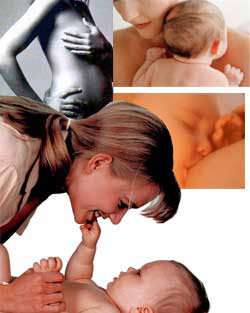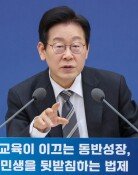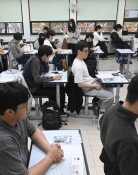"Wake Your Motherhood Inside"
"Wake Your Motherhood Inside"
Posted February. 06, 2004 23:16,

Having Faith (2001)
Written by: Sandra Steingraber
Translated by: Kim Jung-eun
414 pages
Price: 12,000 won
Published by: Bada Publisher Publishing Co.
An American ecologist, Sandra Steingraber, 44, became pregnant with her first baby in 1998 at the age of 38. As a belated and careful pregnant woman who overcame cystic cancer, she came across numerous questions while feeling joy, uneasiness, and impatience just like other women having baby in themselves.
Why do women get morning sickness? What is the reason for a deformed child? Do we have to examine amniotic fluid? Which food is good especially for babies? Do they really need mothers milk?
Sandra frequently went to libraries during her entire pregnancy. By rummaging through embryological books, seeking for the reports on deformity and reading for environmental ecology, she came to figure out every single question about pregnancy and giving birth.
Then, hit upon a word of the famous Indian midwife Cathy Cook, she eventually realized,
The mothers body is the first environment for the baby. If the world gets contaminated, so does the mother, and the baby will become ill later.
This book is a report on the motherhood protection written by a female ecologist. In the book, she explored and recorded the relationship between the babys health, the mothers body, and the global environment. As a result of her research, the book contains a lot of information about pregnancy, birth-giving, and baby-feeding.
Pregnancy, The Things That Threaten Embryos--
Congenital deformity ranks first in infant death in the United States. The main cause is environmental rather than hereditary.
The mercury destroys the embryos brain, and it usually infiltrates into human body by eating fish and marine products. According to the research in Denmark in 1986, the more a mother eats marine foods, the more she has mercury consistency in her hair.
When we tested the children of age 7 who were given birth by mercury-affected mothers, the more ones mother had a high consistency of mercury in her hair, the less a child has for capacity of memory and learning. Moreover, if a baby is exposed to mercury before his birth, it turns out to be more fatal than being exposed in the early years after his birth. The U.S. Environmental Research Committee warns pregnant women not to eat canned tuna fish more than once a month.
Meanwhile, the problem lies in the unknown effect of over three-fourths of 3000 chemical compounds produced in the U.S. to the embryos and childrens physical development. In 1925, domestic usage of plumbum-made paint, which was known as destroying the brain of embryo, was banned across the world through an international agreement. However, the United States, being forced by the lobbying of related companies, only managed to discontinue the manufacturing of plumbum paint in late 1970.
Dilemma of Giving Birth and Breast Milk--
The author considered the pangs of childbirth as different feelings from the pain of illness. Without using any anesthetic that could lighten the pain, she gave birth to a girl after the pang which was like the sound of pipe organ in the church. Although she could not but follow the doctors decision to incise the perineal region, she strongly advised not to do that, since it is still painful to suffer urinary incontinence even after two years from the childbirth and weaken sexual feelings.
To those who survived from the pain of childbirth, another dilemma of mothers milk lays in front of them. There are more than 100 reasons that support the good effect of breast milk to babies. If you feed breast milk to your baby for just a first year, it can reduce the probability of getting illness by an annual medical expenses average of $ 331~475(40~57 thousand won) per baby. Mothers who feed their breast milk also show low rate of getting uterine cancer and breast cancer before the menopause.
What matters the most is 10~20 times of chlorinated organic contaminants in humans breast more than that of a cow. In 1996, a researcher said, If mothers milk is treated like powdered milk, it can never be sold at markets due to the high content of toxic components.
What would you choose between powdered milk and breast milk? Under the comfortable environment where you can feed breast milk without uneasiness, the dilemma will disappear. The first thing to do is to draw a baby at the last link in the food chain. Insoluble toxic compounds concentrates 10 to 100 times as they take each step higher of the food chain. The great victim of polluted environment is not the mother, but her baby who was hurt 10 or 100 times more.
Jin-Yeong Lee ecolee@donga.com




![10번 북송된 그녀, 73만 유튜버 되다…탈북 유튜브 ‘유미카’ 뒷이야기[주성하의 북에서 온 이웃]](https://dimg.donga.com/c/138/175/90/1/wps/NEWS/IMAGE/2025/12/12/132938957.1.jpg)
![독재자의 ‘무상 시리즈’…최대 석유국 베네수엘라 빈민국 만들었다[딥다이브]](https://dimg.donga.com/c/138/175/90/1/wps/NEWS/IMAGE/2025/12/12/132956556.1.png)

